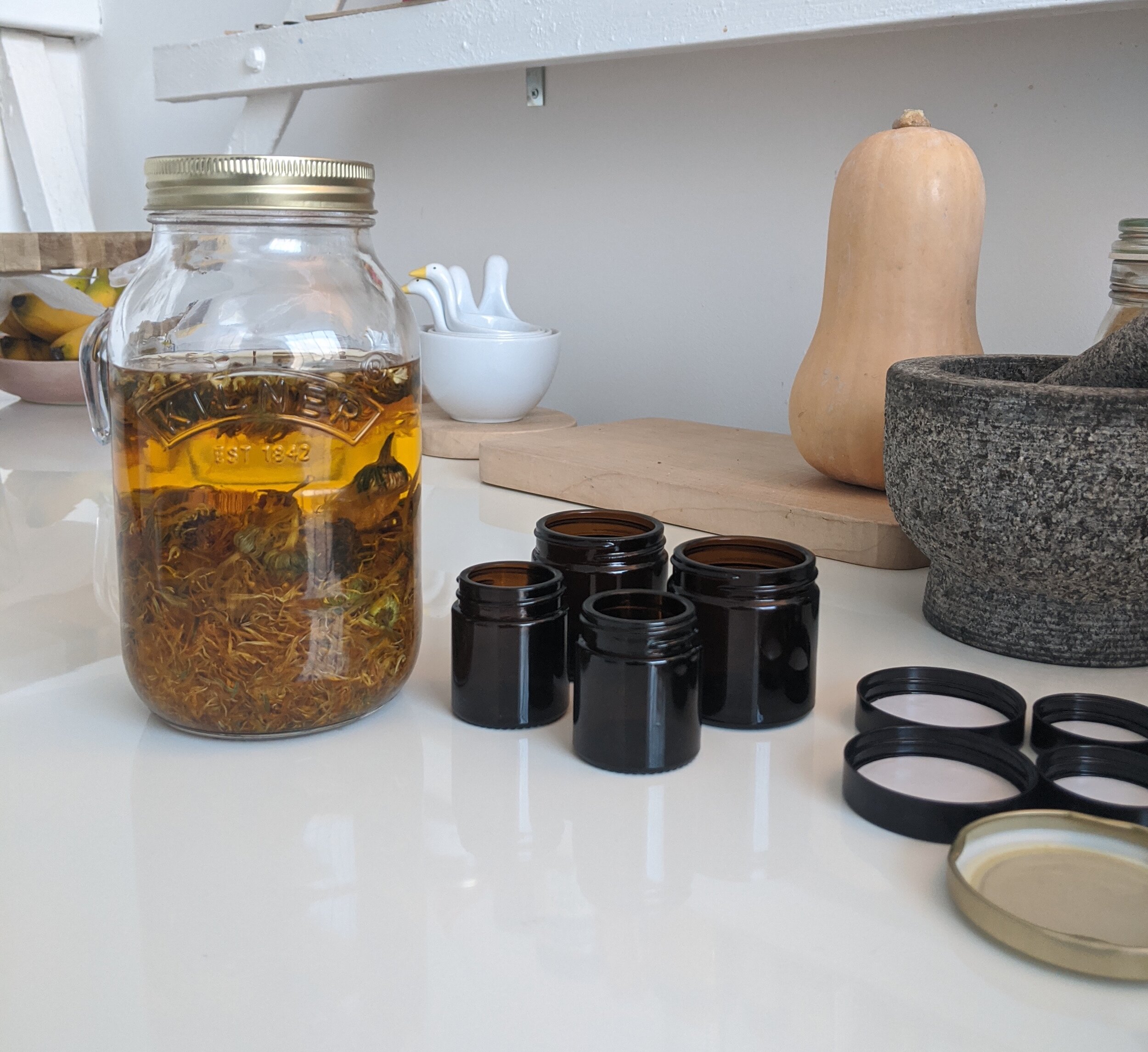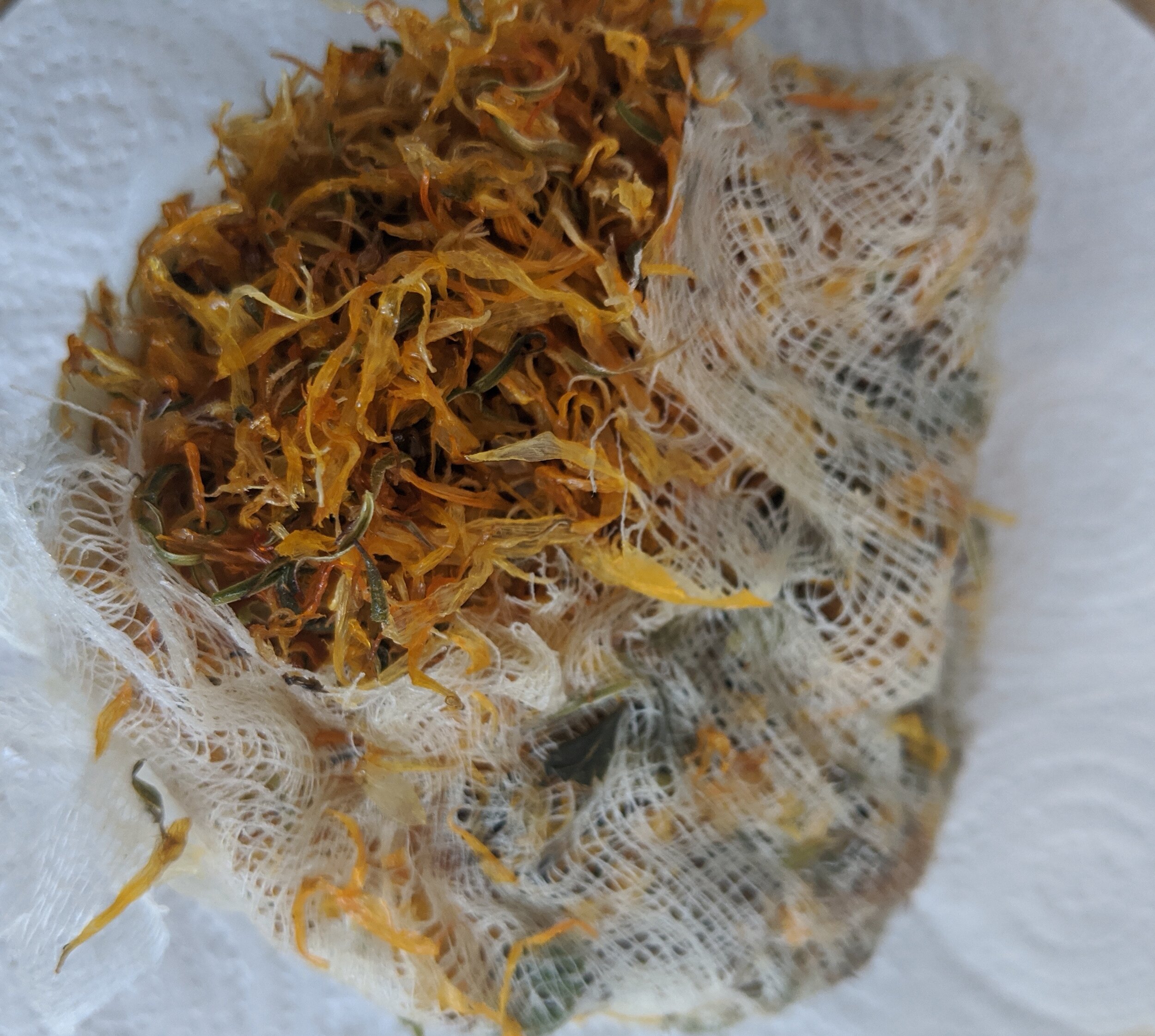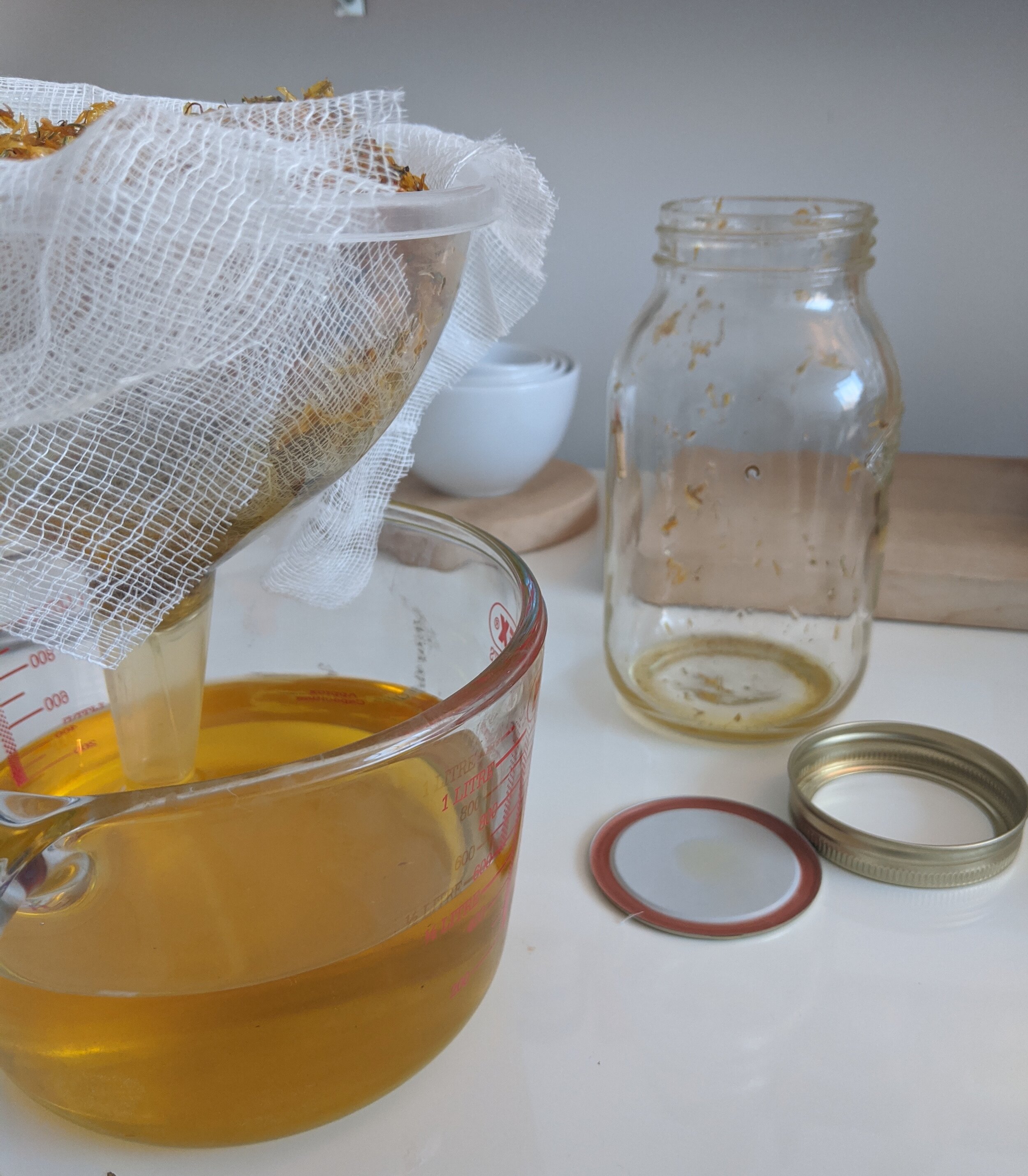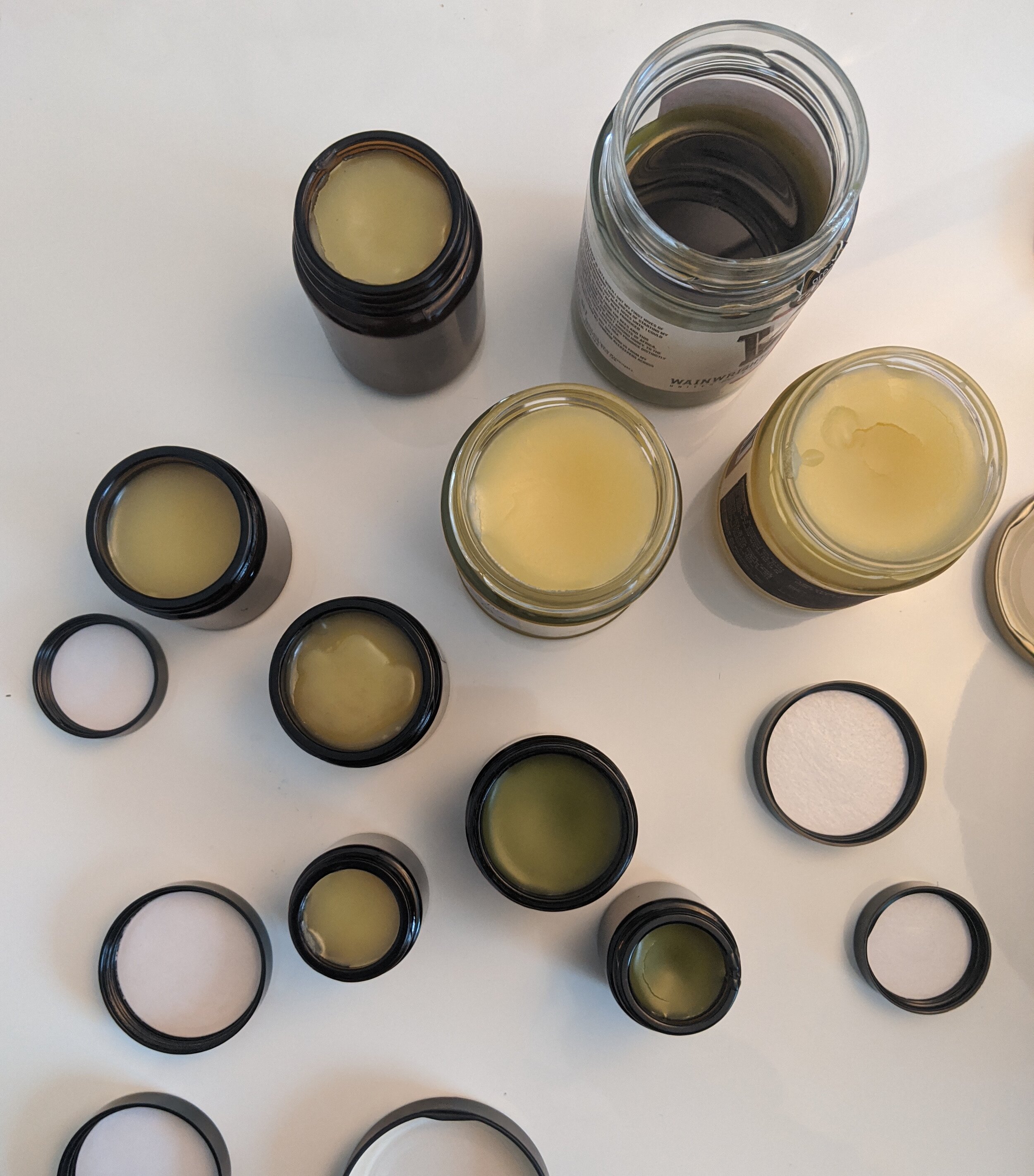Healing Balm
How to make a small batch of soothing Calendula balm and a comforting Comfrey balm
Today I’ll be talking about how and why I made two balms for my friend who has recently become a mother, I’ll also share a little how-to for making your own herbal infused balm.




The first balm I made consists of Calendula, apricot kernel oil and beeswax. I used Calendula due to its properties and because it can offer soothing support both for a nappy rash and chapped nipples. I also decided to make a Comfrey, Plantain and Lavender balm as a general first aid kit staple as it’s known to be great for healing bruises and grazes.
About Calendula:
Calendula(Calendula officinalis) can be used to soothe inflammation and is said to “comfort the heart and spirits”. Its bright flowers can also be used to create natural dye.
Find out more about Calendula here.
About Comfrey:
Common Comfrey (Symphytum officianale) is long know for it supportive properties. It’s folk name being ‘knit-bone’ it has historically been used to promote fast healing. (It’s best to do a bit more research into Comfrey if you’re looking to use it internally as some suggest it should be used externally only).
Find out more about Comfrey here.
About Ribwort Plantain:
Ribwort Plantain (Plantago lanceolata) has been said to support wound healing. It is also considered to be antihistamine and anti-fungal.
Find out more about Ribwort Plantain here.
How to:
Choose your herb + infuse your oil
To infuse your oil there are 2 methods I have used: the slow method; placing a big handful of herbs in a jar, covering with oil so it’s submerged and letting it sit for a month, or the quicker method; placing a big handful of herbs in a bain-marie (same vibe as when you melt chocolate) and submerging with oil, heating on a low heat for around 5 hours and then leave to sit covered for 24 hours (or around 48 in my case, as I forgot about it). You can source your herbs dry or fresh. I use dry when I’m using the slow jar method and don’t want to risk moisture of fresh herbs causing mold, but fresh can work when using the quick method. Once you’ve finished infusing the oil, strain out the herbs with a sieve and muslin cloth so you’re left with just the oil.
Add your wax
When adding your wax I was taught by Rasheeqa (A herbalist based in London) to use a 1:10 ratio of wax:oil. However you could add more if you would like a firmer balm or less for something more liquidy. I use beeswax (other vegan alternatives are available like Candelilla wax). To incorporate the oil and wax you need to get the oil back in a bain-marie, add in the wax and allow it to heat gently until the wax has all melted.
Pour + jar
Now for the satisfying part, pour your melted liquid balm into sterilised jars. This is also the moment where you could add in around 5-10 drops of a chosen essential oil if you wish. Once you’ve added this in allow the balm to cool and seal the jars - ready to use.
Questions:
What herbs could I use?
A good way to decide which herbs you would like to use is to do a bit of research into the properties of common herbs, some great starting resources include The Gift of Healing Herbs and Culpeper’s Complete Herbal.
It can also be helpfully see what you can forage locally to you. I found Food For Free and Hedgerow Medicine were great books for an intro to foraging in the UK. You can find the code of conduct for foraging here.
what oil shall I use?
I mostly use apricot kernel oil or olive oil because they’re not too expensive, they’re widely available and, they’re not too thick a consistency. But you could use any oil, eg. coconut oil, grapeseed etc (just be aware of lower smoking points if you’re using the bain-marie method).
If you have any further questions please feel free to ask

